Monacor HSE-160/CR Handleiding
Bekijk gratis de handleiding van Monacor HSE-160/CR (2 pagina’s), behorend tot de categorie Microfoon. Deze gids werd als nuttig beoordeeld door 32 mensen en kreeg gemiddeld 4.9 sterren uit 16.5 reviews. Heb je een vraag over Monacor HSE-160/CR of wil je andere gebruikers van dit product iets vragen? Stel een vraag
Pagina 1/2

ELECTRONICS FOR SPECIALISTS ELECTRONICS FOR SPECIALISTS ELECTRONICS FOR SPECIALISTS ELECTRONICS FOR SPECIALISTS ELECTRONICS FOR SPECIALISTS ELECTRONICS
MONACOR INTERNATIONAL GmbH & Co. KG • Zum Falsch 36 • 28307 Bremen • Germany
Copyright© by MONACOR INTERNATIONAL. All rights reserved. A-1783.99.01.08.2016
HSE-160/CR
Bestell-Nr. • Order No. 23.6560
Microphone serre-tête
Cette notice s‘adresse aux utilisateurs sans
connaissances techniques particulières. Veuillez
lire la présente notice avant le fonctionnement
et conservez-la pour pouvoir vous y reporter
ultérieurement.
1 Possibilités d’utilisation
Le microphone serre-tête HSE-160 / CR est idéalement
adapté pour des applications de discours et de chant
requérant une grande liberté de mouvements. Pour le
fonctionnement, une tension continue entre 1,5 V et
9 V est nécessaire ; un adaptateur d’alimentation (p. ex.
EMA-1, EMA-300P) ou un émetteur de poche pour la
transmission audio sans fil (TXS-…HSE) dans la gamme
MONACOR, est disponible.
2 Conseils d’utilisation et de sécurité
Le microphone répond à toutes les directives nécessaires
de l’Union Européenne et porte donc le symbole .
•
Le microphone n’est conçu que pour une utilisation
en intérieur. Protégez-le de tout type de projections
d’eau, des éclaboussures, d’une humidité élevée et
de la chaleur (plage de température de fonctionne-
ment autorisée : 0 – 40 °C).
•
Pour le nettoyer, utilisez uniquement un chiffon sec
et doux, en aucun cas de produits chimiques ou d’eau.
•
Nous déclinons toute responsabilité en cas de dom-
mages matériels ou corporels résultants si le micro-
phone est utilisé dans un but autre que celui pour
lequel il a été conçu, s’il n’est pas correctement
branché ou s’il n’est pas réparé par une personne
habilitée ; en outre, la garantie deviendrait caduque.
Lorsque le microphone est définitivement
retiré du service, vous devez le déposer
dans une usine de recyclage adaptée pour
contribuer à son élimination non polluante.
CARTONS ET EMBALLAGE
PAPIER À TRIER
3 Fonctionnement
1) Placez le micro serre-tête et positionnez la capsule
micro près de la bouche dans une position favo-
rable pour parler. Le bras du micro peut être bougé
dans toutes les directions.
2) Reliez la mini fiche XLR du cordon micro à la prise
d’entrée de l’émetteur de poche ou de l’adapta-
teur d’alimentation. Si vous utilisez un adaptateur
d’alimentation, connectez-le à l’entrée micro d’un
appareil audio.
4 Caractéristiques techniques
Type micro : . . . . . . . . . . back électret
Caractéristique : . . . . . . omnidirectionnel
Bande passante : . . . . . . 50 – 18 000 Hz
Impédance : . . . . . . . . . 1,8 kΩ
Sensibilité : . . . . . . . . . . 10 mV/ Pa à 1 kHz
Pression sonore max. : . 110 dB
Alimentation :. . . . . . . . 1,5 – 9 V (⎓)
Poids sans câble : . . . . . 12 g
Branchement : . . . . . . . câble 1,3 m avec
mini fiche XLR 3 pôles
2
3 1 1 = masse
2 = signal audio
3 = alimentation
Tout droit de modification.
Headband Microphone
These instructions are intended for users with-
out any specific technical knowledge. Please
read these instructions carefully prior to operat-
ing the unit and keep them for later reference.
1 Applications
The headband microphone HSE-160 / CR is ideally suited
for vocal sound and speech applications which require
much freedom of movement. For operation, a DC
voltage between 1.5 V and 9 V is necessary; a power
supply adapter (e. g. EMA-1, EMA-300P) or, for
wireless audio transmission, a pocket transmitter
(TXS-…HSE) is available from the product range of
MONACOR.
2 Safety Notes
The microphone corresponds to all relevant directives
of the EU and is therefore marked with .
•
The microphone is suitable for indoor use only.
Protect it against dripping water and splash water,
high air humidity, and heat (admissible ambient
temperature range 0 – 40 °C).
•
For cleaning only use a dry, soft cloth, by no means
chemicals or water.
•
No guarantee claims for the microphone or liabil-
ity for any resulting personal damage or material
damage will be accepted if the microphone is used
for other purposes than originally intended, if it is
not correctly connected or if it is not repaired in an
expert way.
If the microphone is to be put out of oper-
ation definitively, take it to a local recycling
plant for a disposal which is not harmful to
the environment.
3 Setting into Operation
1) Put on the headband microphone and place the
microphone cartridge close to the mouth into a
favourable talk position. For this purpose, the
microphone arm can be moved in all directions.
2) Connect the mini XLR inline jack of the microphone
cable to the input jack of the pocket transmitter or
power supply adapter. When using a power supply
adapter, connect it to the microphone input of an
audio unit.
4 Specifications
Microphone type: . . . . . back electret
Pick-up characteristic: . . omnidirectional
Frequency range: . . . . . 50 – 18 000 Hz
Impedance: . . . . . . . . . . 1.8 kΩ
Sensitivity: . . . . . . . . . . . mV/ Pa at 1 kHz10
SPL max.: . . . . . . . . . . . . 110 dB
Power supply: . . . . . . . . 1.5 – 9 V (⎓)
Weight w/o cable:. . . . . 12 g
Connection:. . . . . . . . . . 1.3 m cable with 3-pole mini
XLR inline jack
2
3 1 1 = ground
2 = audio signal
3 = power supply
Subject to technical modification.
Kopfbügel-Mikrofon
Diese Bedienungsanleitung richtet sich an Be-
nutzer ohne besondere Fachkenntnisse. Bitte
lesen Sie die Anleitung vor dem Betrieb gründ-
lich durch und heben Sie sie für ein späteres
Nachlesen auf.
1 Einsatzmöglichkeiten
Das Kopfbügel-Mikrofon HSE-160 / CR eignet sich
optimal für Gesangs- und Sprachanwendungen, die
viel Bewegungsfreiheit erfordern. Für den Betrieb
wird eine Gleichspannung zwischen 1,5 V und 9 V be-
nötigt. Hierzu ist aus dem Sortiment von MONACOR
ein Speiseadapter (z. B. EMA-1, EMA-300P) oder
zur drahtlosen Tonübertragung ein Taschensender
(TXS-...HSE) erhältlich.
2 Hinweise für den sicheren Gebrauch
Das Mikrofon entspricht allen relevanten Richt-
linien der EU und ist deshalb mit gekennzeichnet.
•
Setzen Sie das Mikrofon nur im Innenbereich ein
und schützen Sie es vor Tropf- und Spritzwasser,
hoher Luftfeuchtigkeit und Hitze (zulässiger Ein-
satztemperaturbereich 0 – 40 °C).
•
Verwenden Sie für die Reinigung nur ein trockenes,
weiches Tuch, niemals Chemikalien oder Wasser.
•
Wird das Mikrofon zweckentfremdet, falsch ange-
schlossen oder nicht fachgerecht repariert, kann
keine Haftung für daraus resultierende Sach- oder
Personenschäden und keine Garantie für das Mik-
rofon übernommen werden.
Soll das Mikrofon endgültig aus dem Be-
trieb genommen werden, übergeben Sie
es zur umweltgerechten Entsorgung einem
örtlichen Recyclingbetrieb.
3 Inbetriebnahme
1) -Das Kopfbügel-Mikrofon aufsetzen und die Mik
rofonkapsel dicht vor dem Mund in eine günstige
Sprechposition bringen. Dazu lässt sich der Mikro-
fonarm in alle Richtungen biegen.
2) Die Mini-XLR-Kupplung des Mikrofonkabels in
die Eingangsbuchse des Taschensenders oder des
Speiseadapters stecken. Bei Verwendung eines
Speiseadapters diesen an den Mikrofoneingang
eines Audiogerätes anschließen.
4 Technische Daten
Mikrofontyp: Back-Elektret. . . . . . . . .
Richtcharakteristik: . . . . Kugel
Frequenzbereich: . . . . . 50 – 18 000 Hz
Impedanz: . . . . . . . . . . . 1,8 kΩ
Empfindlichkeit: . . . . . . 10 mV/ Pa bei 1 kHz
Maximaler Schalldruck: 110 dB
Stromversorgung: . . . . . 1,5 – 9 V (⎓)
Gewicht ohne Kabel: . . 12 g
Anschluss: . . . . . . . . . . . 1,3-m-Kabel mit 3-pol.
Mini-XLR-Kupplung
2
3 1 1 = Masse
2 = Audiosignal
3 = Stromversorgung
Änderungen vorbehalten.
DeutschEnglishFrançais

ELECTRONICS FOR SPECIALISTS ELECTRONICS FOR SPECIALISTS ELECTRONICS FOR SPECIALISTS ELECTRONICS FOR SPECIALISTS ELECTRONICS FOR SPECIALISTS ELECTRONICS
HSE-160/CR
Bestell-Nr. • Order No. 23.6560
MONACOR INTERNATIONAL GmbH & Co. KG • Zum Falsch 36 • 28307 Bremen • Germany
Copyright© by MONACOR INTERNATIONAL. All rights reserved. A-1783.99.01.08.2016
Mikrofon nagłowny
Niniejsza instrukcja przeznaczona jest dla użyt-
kowników, którzy nie posiadają wiedzy i do-
świadczenia technicznego. Przed rozpoczęciem
użytkowania proszę zapoznać się z instrukcją, a
następnie zachować ją do wglądu.
1 Zastosowanie
Mikrofon nagłowny HSE-160 / CR jest mikrofonem wo-
kalowym (do zastosowań muzycznych oraz konferen-
cyjnych). Jest idealny do zastosowania tam, gdzie po-
trzebna jest duża swoboda ruchu. Mikrofon wymaga
zasilania napięciem stałym DC w zakresie od 1,5 V do
9 V. Można do tego celu wykorzystać adapter zasila-
nia (np. EMA-1, EMA-300P) lub nadajnik kieszonkowy
(TXS-…HSE) zestawu bezprzewodowego, dostępne w
ofercie MONACOR.
2 Bezpieczeństwo użytkowania
Urządzenie spełnia wszystkie wymagania norm UE i
dlatego posiada oznaczenie symbolem .
•
Urządzenie jest przeznaczone do użytku tylko w
pomieszczeniach. Urządzenie należy chronić przed
działaniem wody, wysokiej wilgotności powietrza
oraz wysokiej temperatury (dopuszczalna tempera-
tura otoczenia pracy 0 – 40 °C).
•
Do czyszczenia urządzenia należy używać suchej,
miękkiej tkaniny; nie należy stosować wody ani
środków czyszczących.
•
Producent ani dostawca nie ponoszą odpowiedzial-
ności za wynikłe szkody (uszkodzenie sprzętu lub
obrażenia użytkownika), jeśli urządzenie było uży-
wane niezgodnie z przeznaczeniem, niewłaściwie
zainstalowane lub obsługiwane, albo jeśli było pod-
dawane nieautoryzowanym naprawom.
Jeśli urządzenie ma zostać ostatecznie wy-
cofane z użycia, należy przekazać je do
punktu utylizacji odpadów, aby uniknąć
zanieczyszczenia środowiska.
3 Przygotowanie do pracy
1) Należy założyć mikrofon na głowę, umieścić
wkładkę mikrofonową blisko ust w wygodnej po-
zycji. W tym celu można poruszać ramieniem mi-
krofonu we wszystkich kierunkach.
2) Następnie należy podłączyć gniazdo nakablowe
typu mini XLR do gniazda nadajnika kieszonko-
wego lub adaptera zasilania (adapter zasilania na-
leży następnie połączyć z wejściem mikrofonowym
urządzenia audio).
4 Dane techniczne
Typ mikrofonu: . . . . . . . mikrofon elektretowy
Charakterystyka
mikrofonu: . . . . . . . . . . dookólny
Pasmo przenoszenia : . . 50 – 18 000 Hz
Impedancja: . . . . . . . . . 1,8 kΩ
Czułość: . . . . . . . . . . . . . 10 mV/ Pa przy 1 kHz
Maks. SPL.: . . . . . . . . . . 110 dB
Zasilanie: . . . . . . . . . . . . 1,5 – 9 V (⎓)
Waga (bez kabla): . . . . 12 g
Podłączenie: . . . . . . . . . kabel 1,3 m z 3-pinowym
gniazdem nakablowym XLR
2
3 1 1 = masa
2 = sygnał
3 = zasilanie
Z zastrzeżeniem możliwości zmian.
Micrófono de cabeza
Estas instrucciones van dirigidas a usuarios sin
ningún conocimiento técnico específico. Lea
atentamente estas instrucciones antes de utili-
zar el aparato y guárdelas para usos posteriores.
1 Aplicaciones
El micrófono de cabeza HSE-160 / CR está especial-
mente diseñado para sonido vocal y aplicaciones de
habla que requieren mucha libertad de movimiento.
Para el funcionamiento es necesaria una tensión DC
entre 1,5 V y 9 V; un adaptador de alimentación (por
ejemplo EMA-1, EMA-300P) o para transmisión ina-
lámbrica un emisor de petaca (TXS-...HSE) están dis-
ponibles dentro de la gama MONACOR.
2 Notas de seguridad
El micro cumple con todas las directivas relevantes
de la UE por lo tanto está marcado con el símbolo .
•
El micro p2-ha estado diseñado solamente para la utili-
zación en el interior. Protéjalo contra las salpicadu-
ras y las proyecciones de agua, una alta humedad
del aire y del calor (temperatura de ambiente
admisible 0 – 40 °C).
•
Para la limpieza utilice únicamente un trapo seco
y suave, nunca utilice productos químicos o agua.
•
No podrá reclamarse garantía o responsabilidad
alguna por cualquier daño personal o material re-
sultante si el micrófono se utiliza para otros fines
diferentes a los originalmente concebidos, si no se
conecta adecuadamente o no se repara por expertos.
Si el micrófono está definitivamente re-
tirado de servicio, llévelo a una planta de
reciclaje próxima para contribuir a su elimi-
nación no contaminante.
3 Puesta en funcionamiento
1) -Póngase el micrófono de cabeza y coloque la cáp
sula del micrófono de manera que le quede cerca
de la boca en una posición favorable para hablar.
Para hacerlo, puede mover el brazo del micrófono
en todas las direcciones.
2) Conecte la toma mini XLR del cable a la toma de
entrada del transmisor de petaca o del adaptador
de alimentación. Cuando use un adaptador de
alimen tación, conéctelo a la entrada del micrófono
de un aparato audio.
4 Especificaciones
Tipo de micrófono: . . . . back electret
Captación: . . . . . . . . . . . omnidireccional
Banda pasante: . . . . . . . 50 – 18 000 Hz
Impedancia: . . . . . . . . . 1,8 kΩ
Sensibilidad 10: . . . . . . . . . mV/ Pa a 1 kHz
SPL máximo . . . . . . . . . : 110 dB
Alimentación: . . . . . . . . 1,5 – 9 V (⎓)
Peso sin cable: . . . . . . . . 12 g
Conexión: . . . . . . . . . . . cable 1,3 m de longitud con
toma mini XLR 3 polos
2
3 1 1 = masa
2 = señal audio
3 = alimentación
Sujeto a modificaciones técnicas.
Microfono headset
Queste istruzioni sono rivolte all‘utente senza
conoscenze tecniche specifiche. Vi preghiamo di
leggerle attentamente prima della messa in fun-
zione e di conservarle per un uso futuro.
1 Possibilità d’impiego
Il microfono headset HSE-160 / CR è adatto in modo
ottimale per applicazioni di canto e di lingua par-
lata che richiedono molta libertà di movimento. Per
il funzionamento è richiesta una tensione continua
fra 1,5 V e 9 V. A tale scopo sono disponibili, dal pro-
gramma di MONACOR, un adattatore di alimenta-
zione (p. es. EMA-1, EMA-300P) oppure, per la tra-
smissione audio senza fili, un trasmettitore tascabile
(TXS-...HSE).
2 Avvertenze di sicurezza
Il microfono è conforme a tutte le direttive rilevanti
dell’UE e pertanto porta la sigla .
•
Far funzionare il microfono solo all’interno di locali
e proteggerlo dall’acqua gocciolante e dagli spruzzi
d’acqua, da alta umidità dell’aria e dal calore (tem-
peratura d’impiego ammessa fra 0 e 40 °C).
•
Per la pulizia usare solo un panno morbido,
asciutto; non impiegare in nessun caso prodotti
chimici o acqua.
•
Nel caso d’uso improprio, di collegamenti sba gliati
o di riparazione non a regola d’arte del microfono,
non si assume nessuna responsabilità per eventuali
danni consequenziali a persone o a cose e non si
assume nessuna garanzia per il microfono.
Se si desidera eliminare il microfono defini-
tivamente, consegnarlo per lo smaltimento
ad un’istituzione locale per il riciclaggio.
3 Messa in funzione
1) Sistemare il microfono headset in testa e por tare la
capsula del microfono vicino alla bocca in una posi-
zione adatta per parlare. A tale scopo, il braccio del
microfono può essere piegato in tutte le direzioni.
2) Inserire la presa mini XLR del cavo microfono nella
presa d’ingresso del trasmettitore tascabile oppure
dell’adattatore di alimentazione. Se si usa un adat-
tatore di alimentazione, collegarlo con l’ingresso
microfono di un apparecchio audio.
4 Dati tecnici
Tipo di microfono: . . . . back-elettrete
Caratteristica
direzionale: . . . . . . . . . . omnidirezionale
Gamma di frequenze: . 50 – 18 000 Hz
Impedenza: . . . . . . . . . . 1,8 kΩ
Sensibilità: . . . . . . . . . . . 10 mV/ Pa con 1 kHz
Pressione sonora max.: . 110 dB
Alimentazione: . . . . . . . 1,5 – 9 V (⎓)
Peso senza cavo: . . . . . . 12 g
Collegamento: . . . . . . . cavo 1,3 m con presa
mini XLR a 3 poli
2
3 1 1 = massa
2 = segnale audio
3 = alimentazione
Con riserva di modifiche tecniche.
ItalianoEspañolPolski
Product specificaties
| Merk: | Monacor |
| Categorie: | Microfoon |
| Model: | HSE-160/CR |
Heb je hulp nodig?
Als je hulp nodig hebt met Monacor HSE-160/CR stel dan hieronder een vraag en andere gebruikers zullen je antwoorden
Handleiding Microfoon Monacor

22 Juni 2023

19 Juni 2023

19 Juni 2023

19 Juni 2023

18 Juni 2023

16 Juni 2023

15 Juni 2023

11 Juni 2023

11 Juni 2023

11 Juni 2023
Handleiding Microfoon
- JTD
- Deity
- Celly
- AVerMedia
- Trevi
- DPA
- ONYX
- Wharfedale
- Golden Age Project
- Eikon
- Thermaltake
- Soyuz
- PureLink
- AMT
- MILAB
Nieuwste handleidingen voor Microfoon
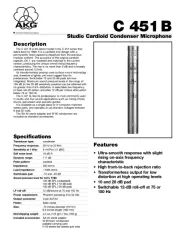
2 Augustus 2025
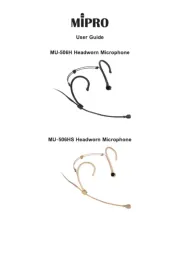
29 Juli 2025
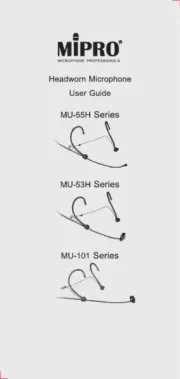
29 Juli 2025
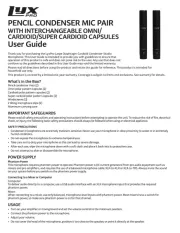
29 Juli 2025

29 Juli 2025
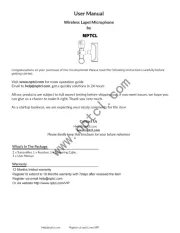
28 Juli 2025
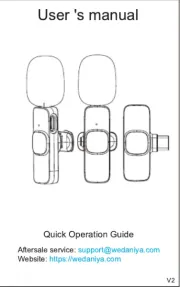
28 Juli 2025
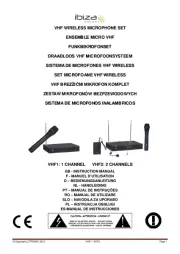
28 Juli 2025
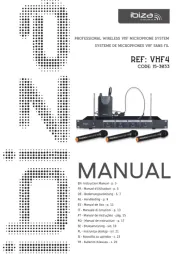
28 Juli 2025
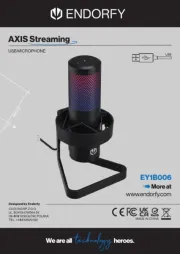
23 Juli 2025